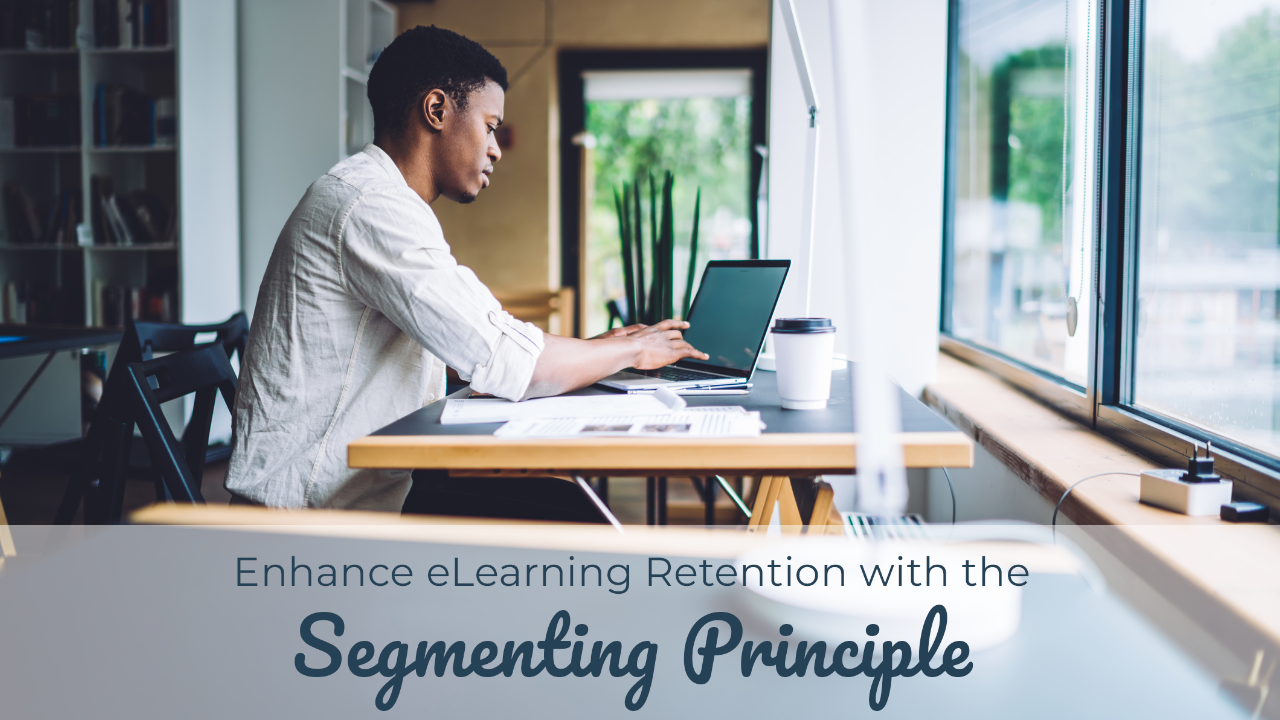Enhance eLearning Retention with the Segmenting Principle
by Amanda Kizer

The Segmenting Principle suggests breaking down eLearning content into manageable "chunks" or segments, giving learners more control over the pace of learning. Segmenting prevents cognitive overload, promoting better understanding and retention of knowledge.
How Does the Segmenting Principle Enhance Employee Performance?
By preventing cognitive overload and promoting self-paced learning, the Segmenting Principle allows learners to absorb and retain more information. This enhanced knowledge retention facilitates practical application in the workplace, thus improving performance.
Here are examples of how you may see this principle applied to improve eLearning.
- Poor: A long, unbroken video lecture.
- Better: The same lecture divided into segments but without interactive controls.
- Best: The lecture segmented and paced by the learner, with interactive controls for navigation.
- Poor: A course on data analysis presents extensive information in long, unbroken videos.
- Better: The course breaks the content into a few large segments, allowing some control over pacing.
- Best: The course presents the material in short, digestible segments, giving learners full control over the pace of learning.
- Poor: A module on conflict resolution delivers all content in a single, lengthy session.
- Better: The module breaks down the content into a few long segments.
- Best: The module splits the content into small, manageable chunks, offering a self-paced learning experience.
- Poor: A product training course crams all information into one extensive module.
- Better: The course splits the information into a few sizable segments.
- Best: The course breaks down the information into bite-sized pieces, allowing learners to digest the content at their own pace.
Your next steps
Examine your eLearning courses and identify opportunities to break the content down into smaller, manageable segments. Implement these changes to prevent cognitive overload and promote self-paced learning.
References:
- Mayer, R. E., & Moreno, R. (2003). Nine Ways to Reduce Cognitive Load in Multimedia Learning. Educational Psychologist, 38(1), 43-52.
- 💡Get the book! Clark, R. C., & Mayer, R. E. (2016). E-Learning and the Science of Instruction: Proven Guidelines for Consumers and Designers of Multimedia Learning. John Wiley & Sons.
You May Also Like
These Related Stories

Strengthen eLearning with the Pre-Training Principle

Enhance eLearning Comprehension with Contiguity


No Comments Yet
Let us know what you think